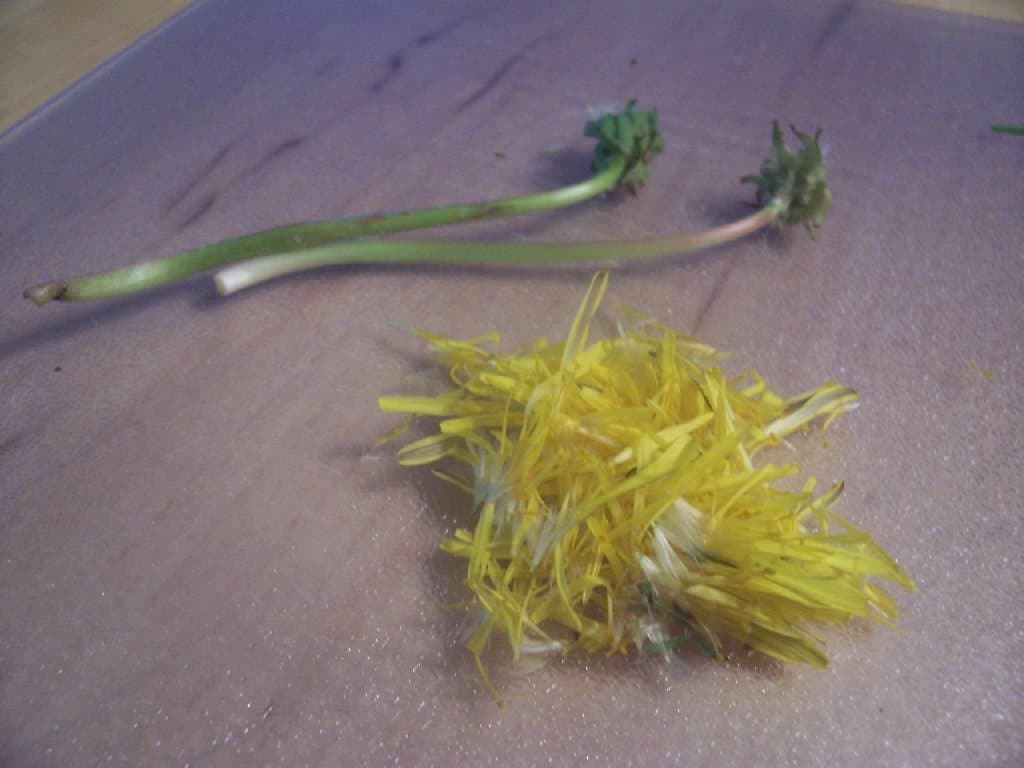 Dandelion Wine Recipe
Dandelion Wine Recipe
This post is from my old garden blog called The Compost Bin and it was one of my favorites. It’s about my Dad’s really great Dandelion Wine recipe and it was originally posted in May of 2006.
After mentioning Dandelion Wine in a recent post I received a few comments wanting to know more about it. So I asked my Dad to explain how he makes it and give a little background into how he came up with his recipe. This is what he sent me:
A while ago I went to a High School class reunion and a class mate had made some dandelion wine. He brought it in a few sauce bottles and poured a little into everyone’s glass for a taste. This was my first experience with any home made wine other than grape wine. It was delicious. I remarked so much about it he gave what was left in the bottle to take home. When I asked for the recipe, to my surprise, he said “NO”. Well being the kind of person I am I took it upon myself to produce an even better dandelion wine.
After some trial and error, and quite a of bit of reading I have come up with my own recipe and it goes like this.Dandelion Wine Recipe
- 11 ounces Dandelion Flower (Petals Only)
- 1 Gallon and 2 cups of water
- 1 lb Golden Raisins
- 3 lbs Granulated Sugar
- 2 Lemons
- 2 Oranges
- 1 Banana
- 1 tsp Yeast Nutrient
- Champagne Wine Yeast
I have found that the best way to pick dandelion flowers is with my wife or with many friends. What you can do is pick as many flowers as you can and freeze them. When you are ready to start your brew take them out of the freezer and pluck the yellow petals from the green stalk. Be sure not to use any of the green. Put the petals in either a nylon bag or a hops sack which you can get at a wine and beer making supply store. While you’re there pick up the yeast nutrient, the Champagne yeast, a one gallon jug, a fermentation trap and a food grade plastic pail. I have used both nylon bag and hops sack and they both work well. Tie the bags closed. Chop the raisins and place them in a bag or a sack also. The lemons and oranges must be peeled well with no pith (the white part) remaining on the fruit or the peel. Put all the fruit in the bags or sacks. Put the peels in a different sack. Chop the banana and guess what…put it in a sack. Just incase you’re wondering the raisins add body to the wine and the banana is for smoothness.
Place the dandelion petals the banana and the peels from the lemons and oranges into the food grade plastic pail. Boil the water and dissolve the sugar in the water. Pour the boiling water into the pail and stir. Hold aside a half cup of the liquid. Cover the pail with plastic wrap and let sit until the temperature is 70 degrees. Add the lemons and oranges squeezing them and dropping them into the must. When the half cup of liquid is also cool add to it the yeast nutrient and the yeast according to the directions on the package. When this starts bubbling add it to the pail, recover and place in a warm place for four days.
After four days rack into the one gallon jug and fit with the fermentation trap. You noticed that all the liquid did not fit. Hold this aside in a similar jug or jar. When the wine clears, in approximately 40 to 60 days, rack it to another jug leaving the lees at the bottom of the first jug. You should never rack the wine that is not clear. Use the liquid that was left over to top off the jug. Try to keep the wine full to about an inch and a half from the top of the jug. You should rack two more times before putting the wine into bottles and capping. Be sure that fermentation has completely stopped before bottling.
You should let the wine age about five to six months before tasting. In a year it will taste even better if you can wait that long.
I can not emphasize enough that all the components used in this procedure must be sterilized. The food grade plastic pail, the one gallon jug and any other containers you use.
Good Luck and enjoy.



